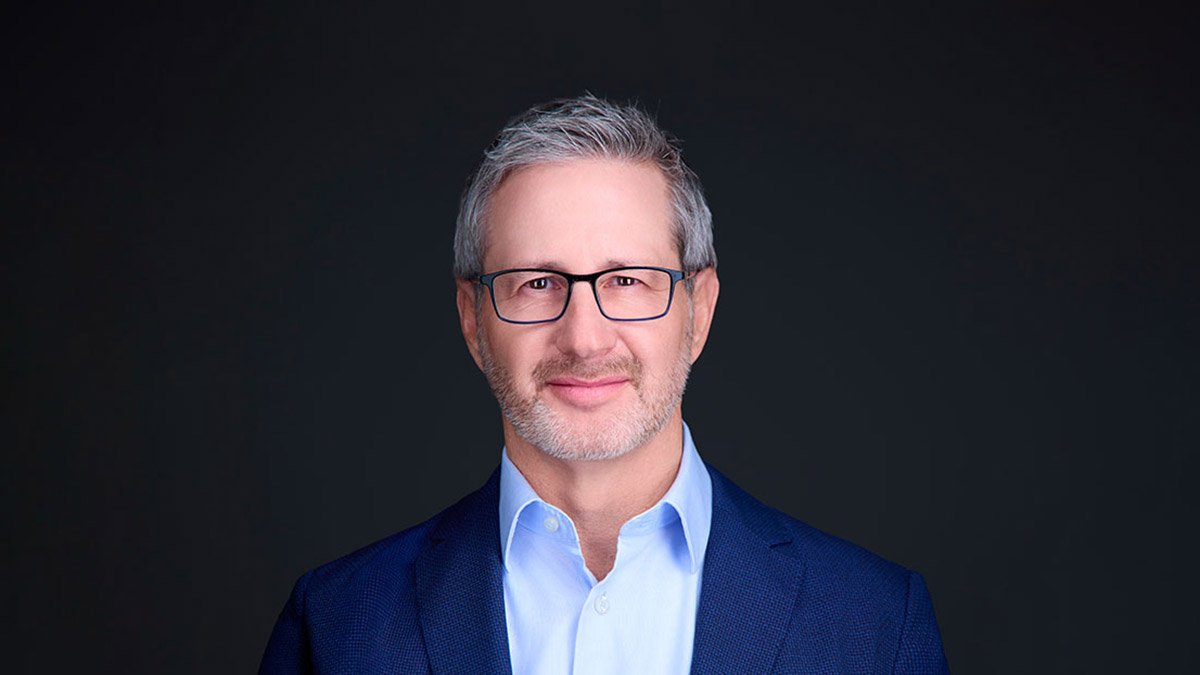For Cisco’s leadership team, the commitment to a sustainable world begins at home.
“For any of us who are parents,” said Fran Katsoudas, executive vice president and chief people, policy, and purpose officer, “we think a lot about our children and the world that they will live in. And from a sustainability perspective, the climate crisis that we have experienced firsthand in recent years is a wake-up call for us all.”
In a wide-ranging interview, Katsoudas, Scott Herren, the company’s chief financial officer, and Rakesh Chopra, a Cisco Fellow in the company’s Common Hardware Group, shared how they are turning that personal commitment to sustainability into professional action.
“What’s fascinating to me about working at Cisco,” said Chopra, “is actually being able to take those personal goals and drive an impact in my day-to-day work. Because I believe we can make a real difference in what we’re doing to the planet.”
That difference is spelled out in Cisco’s comprehensive 2021 Purpose Report, which covers the company’s efforts in a wide range of areas. As regards sustainability, that includes accelerating circular economy principles; creating smaller, lighter, and more efficient packaging and products; engaging partners, suppliers, and customers; embracing hybrid-work solutions; and setting aggressive net zero goals for greenhouse gas emissions.
One innovation in particular has consumed Chopra’s work in recent years. The Silicon One chip, which powers Cisco’s latest generation of web-scale routers and switches, is already driving huge energy savings, coupled with great improvements in speed, bandwidth, and latency.
“Some estimates project that by 2030, 20 percent of our overall electricity consumption will be used by information and communications technologies,” Chopra explained. "So from a Cisco perspective, we started thinking about how we can change this in a fundamental way.”
Silicon One does just that, with the Cisco 8201 router offering 35 percent more bandwidth with 26x less power draw, in a smaller, lighter, and lower-cost package. And as Katsoudas emphasized, it’s creating a ripple effect across the industry.
“It demonstrates how our technology can not only provide our customers with the fastest speeds and the most secure products,” she said. “But it also helps them to solve their own issues from a sustainability perspective. ”
Fran Katsoudas, Cisco’s Executive Vice President and Chief People, Policy & Purpose Officer, highlights the important connection between strong company culture and sustainability initiatives.
Setting the business case for sustainability
For Herren, sustainability is a moral issue first and foremost. But he’s quick to share his thoughts on the business imperative. Everything from efficiency and productivity to investor interest and talent acquisition, he believes, will benefit from strong sustainability goals. And he’s heartened that more business leaders are starting to see the light.
“To me it’s perfectly aligned,” he stressed, “and it baffles me that more people don’t see that. But interestingly, I’m in a group with fellow CFOs of some of the largest companies in the world and we are all beginning to see things in the same way.”
Cisco has set a high bar for sustainabilty, and increasingly that is a major factor for a range of stakeholders, whether customers, partners, employees, or investors.
“Our commitment to social and environmental issues is important to our employees,” Herren said, “and not just the ones that we have today, but also as we go out to attract new talent. And if you can’t recruit the most talented people, you’re on that endless road to mediocrity.”
Increasingly, customers are looking to Cisco to support their own sustainability goals.
“It’s important to our customers,” Herren explained, “because many of them have made their own net zero commitments and see things the same way we do. They too have put a big focus on sustainability and reversing climate change. And I’m super proud of the technology we’ve produced that will help them make their own net zero commitments.”
For more than 15 years, Cisco has worked toward a sustainable future by reducing emissions, reducing waste, building more efficient products, and setting and achieving ambitious goals.
In September 2021, Cisco committed to reaching net zero across all scopes of emissions by 2040, including product use, operations, and supply chain. The company also committed to reaching net zero for all global Scope 1 and Scope 2 emissions by 2025.
At the same time, Cisco is lowering the barrier to entry for connectivity, by cutting costs and energy demands, especially when Silicon One is combined with small, pluggable Cisco Acacia optics. All of which has deep implications for closing the digital divide.
“If you change the economics of the Internet in a fundamental way,” Chopra said, “you can deliver bandwidth at much lower cost points, and essentially decrease the friction between people connecting.”
That, in turn, opens up new possibilities in underserved regions of the world — for greater efficiency, sustainability, education, economic opportunity and more.
“Talent is equally distributed,” Herren added, “but opportunity is not. The more opportunity can become equally distributed, the faster we can solve big problems.”
A top-down, bottom-up culture of sustainability
When Cisco declared its core purpose of Powering an Inclusive Future for All, it upped the ante for using technology to create better connectivity, health care, education, and opportunity across the planet. Katsoudas considers these issues to be closely intertwined.
“When it comes to issues like sustainability, the digital divide, and inclusion,” she said, “the most vulnerable who are most impacted by each of these issues are the same groups again and again. So personally, I feel committed to doing everything that I can to support vulnerable communities around the world.”
And from her perspective, change begins with the company’s internal culture.
“Our culture is both bottom up and top down,” Katsoudas clarified. “So, we want every employee to feel like they own our purpose.”
“And when you pivot your culture in a way where every voice matters,” she added, “that means you’re going to work through sustainability goals a lot faster. We have committed to reaching net zero across all scopes of emissions by 2040. It’s an aggressive target, but I believe that our culture will enable us to get there faster.”
Setting an aggressively high bar is the responsibility of an industry leader. And that global leadership role will continue to be a key priority. In addition to the environmental sustainability work the company and its employees are engaged in, the Cisco Foundation is eager to play a larger role. In April 2021, the Foundation made a ten-year, $100 million commitment to fund nonprofit grants and invest in climate solutions.
“The Foundation is putting real money to work behind it,” Herren clarified, “with an investment focused specifically on climate change, education and engagement around climate change, carbon capture, non-profits, and start-ups that otherwise might struggle to find funding.”
In the end, sustainability is a problem that will take concerted effort — from all corners. And for Chopra, that includes competitors. Because as excited as he is about the cutting-edge standards set by Silicon One, especially in energy savings, he believes it’s just a start.
Scott Herren, Cisco’s Chief Financial Officer, makes note of the incredible pace at which large organizations are taking on the challenge of sustainability at a global level.
“We’ve created a building block that will allow us to continue to innovate generation over generation,” he said. “But my challenge is weirdly enough to our competitors. I want our competitors to step up to the plate, because the more we all accomplish, the more benefits the world will see.”
And he’s excited to think of the innovations to come, especially around energy savings.
“Power is a fundamental, limiting factor,” Chopra explained. “It creates a technology imperative by limiting what we can build. A business imperative by limiting what our customers can deploy. And a moral imperative because there is only so much the planet can sustain. These three coming together create the perfect melting pot for innovation.”
For all the steep challenges that remain, Katsoudas summed up the optimism that all three continue to feel.
“The combination of our focus and the technologies that are emerging makes me incredibly optimistic,” she concluded. “There’s a tremendous amount of work to do. And I think everything we read tells us that from a climate perspective, it’s not going to get better until we do so much more. But we can see that there is a growing commitment around the globe, and we need to really embrace and lean into that.”
To further explore Cisco’s commitment to powering an inclusive future for all — including our ambitious sustainability goals — check out the 2021 Purpose Report.
###
Related content:
- Silicon One, a blazing fast chip for a sustainable world
- Building a network as fast as the future
- Powering a low carbon, zero emissions future for all




